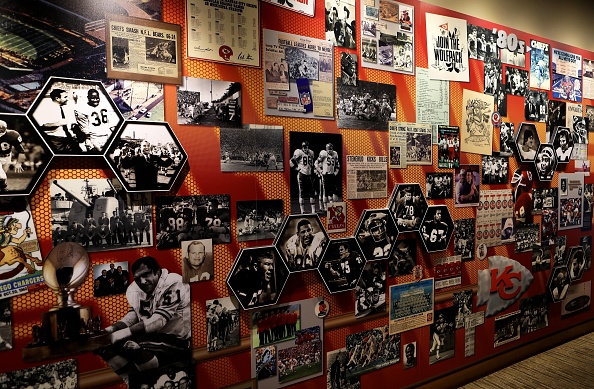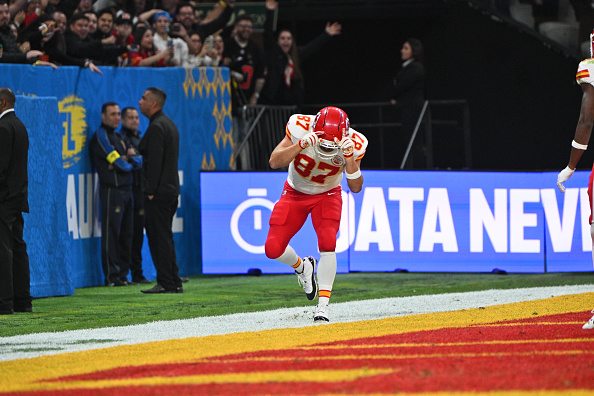The Kansas City Chiefs’ rise to success might appear to be sudden, even to devoted football fans. However, as you look into the organization’s history, you will find a team that had not won a Lombardi for fifty seasons. Also, they have been a team with endless seasons spent in mediocrity.
Skilled coaches with losing records. Star players amidst an average or less-than-average team. Years of missing the postseason. All of it has led to the current success of the team. Fortune has been a long time coming to the Chiefs, and she is smiling down on them.
Will it last forever? No, but then nothing ever does.
The Foundation
To understand the path a team is walking down, you must understand their past. The origins of the Chiefs may or may not surprise you. Lamar Hunt originally asked the National Football League (NFL) for an expansion team in Dallas. After being turned down, he created the American Football League (AFL) and founded his team, the Dallas Texans, in 1960.
Next came the search for a coach. After Bud Wilkinson and Tom Landry declined the position, Hunt hired Hank Stram. Despite successful seasons, Hunt found it challenging for the Dallas area to support both the Texans and the Cowboys, even with the Texans’ superior record. Despite his initial preference for a different location, Hunt eventually yielded to others and moved the team to Kansas City.
Following the move, the team received a new name and became one of the strongest teams in the AFL. They tied the Oakland Raiders for the most playoff appearances in the AFL and won the most AFL Championships, with three. The team’s success provided leverage in negotiations with NFL Commissioner Pete Rozelle to agree on an AFL–NFL merger. There was an agreement to play a championship game in early 1967 following the conclusion of the 1966 seasons of both leagues. Hunt gave the championship game its name, “Super Bowl,” a name that has persisted to this day.
The first Super Bowl highlighted a match-up between the Kansas City Chiefs, who defeated the Buffalo Bills on the way to get there, and the Green Bay Packers. The Packers won the game, but in the end, it was Lamar Hunt who ultimately won.
Hunt’s vision for his team and the league helped pave the way for the success the NFL continues to have today.
Downward Slide Into Mediocrity
The Chiefs’ Super Bowl I loss to the Packers didn’t stop them from making a swift return. Three seasons later, the Chiefs defeated the New York Jets and the Raiders to make it to Super Bowl IV. Their opponent was the Minnesota Vikings, and the Chiefs came out victorious 23-7. Two seasons later, they made the playoffs again but lost in a divisional match-up against the Miami Dolphins.
After that, the Chiefs wallowed in the mire of no postseason from 1972 to 1985. The team’s 1986 season culminated in a Wild Card defeat against the Jets. Following three seasons and three coaching changes, the Chiefs, under Marty Schottenheimer, returned to the playoffs in his second year.
Schottenheimer’s tenure as Chiefs coach saw six different quarterbacks start; while they had some postseason wins, their closest Super Bowl appearance was during the 1993-94 season. With Joe Montana behind the offensive line, they reached the AFC Championship. Unfortunately, they lost to the Buffalo Bills. Players and fans alike were heartbroken.
After Schottenheimer’s resignation following the 1998 season, the Chiefs began their descent into obscurity and mediocrity. Players left, Gunther Cunningham took over head coaching duties for two seasons, and the postseason remained elusive. During that time, losing Derrick Thomas in 2000 following a car accident encapsulated not only the despair fans felt toward their team but also the state of the team itself.
Dick Vermeil took over coaching duties starting with the 2001-02 season. During his five-season ensure, 2003 was the only postseason appearance.
A Dynasty Rises
In 2013, the Chiefs’ rise to NFL prominence started when Andy Reid became their head coach. His coaching skills were undeniable, but a Super Bowl win eluded him with the Philadelphia Eagles. Sometimes a change of scenery will work wonders. After hiring Reid, the Kansas City Chiefs acquired Alex Smith from the San Francisco 49ers. Although not a star quarterback, Smith provided consistent support to the offensive line. It was what the Chiefs needed.
Reid’s inaugural season saw a 9-0 start, a feat accomplished only once before in team history. Their 11-5 season record earned them a postseason berth, however, their run ended swiftly with a 45-44 defeat against the Indianapolis Colts.
The struggles of Reid and the Chiefs in their second season were very real. A 9-7 season resulted in them missing the playoffs.
Season three opened with a win, only to be derailed by five consecutive defeats and Jamaal Charles’ ACL injury. However, they went on to win ten straight. Kansas City became the second team post-AFL/NFL merger to make the playoffs after a 1-5 start. Those ten wins broke the franchise record for nine straight (2003,2013). Twenty-three seasons after their last playoff win (1993-94), the Chiefs opened their postseason run with a victory against the Texans. Sadly, they lost in the AFC divisional round to the New England Patriots.
The 2016 season offered a preview of the future. The Kansas City team achieved their biggest regular season comeback victory. Trailing 24-3, a two-yard touchdown run by Alex Smith in overtime secured a 33-27 win against the San Diego Chargers. Additionally, this season’s Christmas Day matchup against the Denver Broncos secured the Chiefs’ tenth straight divisional victory. Their postseason run ended in the divisional round against the Pittsburgh Steelers, dashing their Super Bowl hopes.
Even with their playoff loss, 2017 became another important turning point for Kansas City. That year’s draft saw the Chiefs make a bold first-round selection: Texas Tech quarterback Patrick Mahomes.
Why Mahomes?
Kansas City habitually acquired quarterbacks discarded by other teams or considered journeymen. Understanding the Chiefs’ current position necessitates understanding the gamble the team took by drafting Mahomes, including trading up in the first round. Alex Smith’s presence at quarterback led many to believe the Chiefs weren’t looking for another, especially so early in the draft.
Confident in their assessment of Mahomes, despite other teams’ interest, the Chiefs traded up to the tenth spot by making a deal with the Bills.
What exactly was the downside of taking Mahomes?
Well, looking at the player he is today, you might not believe there were issues. Scouts considered him to have poor mechanics and considered him a risky player on a poorly performing Texas Tech college football team. Additionally, the spread offense also didn’t translate well to the pro level.
The Chiefs’ selection of Mahomes indicated a future-oriented approach. They were looking for a quarterback who they could develop into a cornerstone of their team. At that time, Smith was 33 and had two years left in his contract. It was a perfect situation. Kansas City had a veteran quarterback who could fill the gap and mentor the rookie until the coaches determined Mahomes was ready to take on the role of starter.
The question remains: what potential in Mahomes did the Chiefs’ front office and coaches see?
Despite his flaws as a player, his powerful arm, tenacity, competitive spirit, and dedicated approach to his position (in spite of occasional risks) balanced them out. A good comparison would be Brett Favre. Mahomes’ playmaking ability, even on a weak team like Texas Tech, hinted at his potential to excel with a strong offensive line.
Unlike most rookies, Mahomes backed up Smith during the 2017-18 season rather than starting. After securing a playoff berth, Mahomes started the season’s final game against the Broncos. The Tennessee Titans ultimately beat them in the Wild Card round.
Following the season, the team traded Smith to the Redskins, setting Mahomes up to become the starting quarterback.
Nothing has been the same since.
Sustained Success
There is more to a team’s success than just talent. Typically, there is an ebb and flow to the seasons as they pass; however, for the Chiefs, the past seven years have been the most successful for the franchise.
Therefore, what explains this high level of sustained maintainability?
Having reached rock bottom, improvement is inevitable, right? Players and front office leadership came and went, but what grew out of the ashes of the 2012 season was a Chiefs organization with low turnover and ownership’s ability to let their employees and players do their jobs.
Andy Reid was the first key piece to the puzzle. The next big piece was getting Patrick Mahomes. Once a team secures the head coaching and quarterback position, everything else is a matter of guessing, talent, and the ability to thrive under pressure.
Once the train that was the Chiefs started moving down the track, it was difficult to derail. Consistency has been a major theme for Kansas City. The team’s success stems from diligent preparation, accountability, and the players’ complete buy-in. They believe in themselves, but more importantly, they believe in each other. The team’s strong leadership, especially from veteran players, inspires through their on and off-field conduct.
Another way the Chiefs have been successful is their ability to recreate themselves each season. Player turnover is inevitable, but successful teams like Kansas City leverage their existing talent, acquire necessary players, and recognize Mahomes is the cornerstone of the team. Also, having a front office who has performed well in the draft, trades and free agency does wonders for a team as well.
The Chiefs Kingdom
Through the ups and downs, the Chiefs have been blessed with a fanbase whose devotion is unwavering. Fan traditions persist across generations, irrespective of whether the team wins or loses. They’re known as the Chiefs Kingdom—a diverse group united in their support for their beloved team. Their feelings are intense and persistent, irrespective of what happens to their team on the field. Elaborate costumes and even more elaborate and mouth-watering tailgate food await anyone making a pilgrimage to Arrowhead.
Essentially, the fans are the heart and soul of the Chiefs organization.
In 2019, Chiefs fans contributed over $2 million to ALS research to honor Jovan Belcher. The following year, in 2020, during the COVID-19 pandemic, Chiefs fans donated over 100,000 pounds of food to local food banks.
The years since Super Bowl IV have been filled with playoff frustration for fans, marked by no postseasons, countless premature playoff exits, and a heartbreaking Super Bowl near-miss (thanks to the Bills). The current success is an unfamiliar feeling to fans. Though they hope it will never end, like all good things…it will.
However, the fans will remain, but will the rest of the NFL?
Living Long Enough
After the amount of success they have had in such a short period of time, are they the hero or villain? Well, it depends on who you are asking. Of course, the Chiefs will be heroes to their fans, and perhaps sometimes a team that people want to see beaten. However, most now see Kansas City as the villain. They’ve had enough success. Now it is someone else’s turn. The only problem is now the Chiefs will not go away.
The Chiefs are like a persistent, irritating fly. They are the demon that just will not die and go back into the depths from which they came. One day it will be true. Kansas City’s dominance will end, and another team will take their place on the mountaintop, leaving Kansas City back in mediocrity. However, for now, the Chiefs are doing all they can to keep the success and wins going.
Hunt never got the chance to see his team return to the Super Bowl. He passed away on December 13, 2006. His legacy lives on not only in his family, but with each player and coach who takes the field for the team. Through the years, good and bad, the Kansas City Chiefs’ DNA has embodied the spirit of unwavering perseverance in pursuit of their dreams. Though it began with Lamar Hunt, his tenacity lives on in the hearts of fans and players.
Without him, there would be no kingdom or dynasty.







